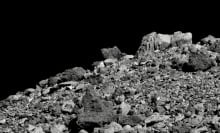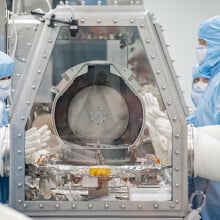In the profoundly remote Argentina desert, at over 12,000 feet high, and in a place where no roads go, scientists found an exotic world new to science.
Among white salt plains atop the Puna de Atacama plateau, there's a system of greenish lagoons harboring vast bacterial communities, called stromatolites, that create layered mounds as they expand. The unique ecosystem might be a glimpse into Earth, billions of years ago, when primitive organisms first appeared on our planet.
"This lagoon could be one of the best modern examples of the earliest signs of life on Earth," geologist Brian Hynek, one of the scientists who found this elusive ecosystem, said in a statement. "It’s unlike anything I’ve ever seen or, really, like anything any scientist has ever seen."
"It’s just amazing that you can still find undocumented things like that on our planet," Hynek, a professor at CU Boulder, marveled.
In the drone footage below, you can view these mysterious lagoons, and the life flourishing within:
Some of the oldest evidence of earthly life are preserved stromatolites, like the 3.45-billion-year-old fossilized structures found in Marble Bar, in Western Australia. Back then, photosynthesizing microbes called cyanobacteria created these layered mounds. Significant amounts of oxygen from cyanobacteria wouldn't even appear in Earth's atmosphere until much later, around 2.5 billion years ago.
This newly discovered environment could also hint at what the desert planet Mars was once like when it was a temperate, watery world with lakes and even roaring rivers.
"It’s unlike anything I’ve ever seen or, really, like anything any scientist has ever seen."
"If life ever evolved on Mars to the level of fossils, it would have been like this," Hynek said. "Understanding these modern communities on Earth could inform us about what we should look for as we search for similar features in the Martian rocks."
Want more science and tech news delivered straight to your inbox? Sign up for Mashable's Light Speed newsletter today.
It's little wonder these strange lagoons remained unknown — to modern scientists, at least. While staying in a tiny high desert village (population 35), the researchers spotted hints of the lagoon on satellite images. They drove until the road ran out, and then traversed on foot, ultimately arriving at the greenish bodies of water.
"In some places, we were sinking up to our knees in salt slush," Hynek said.
Top video story by Mashable video producer Teodosia Dobriyanova.



























